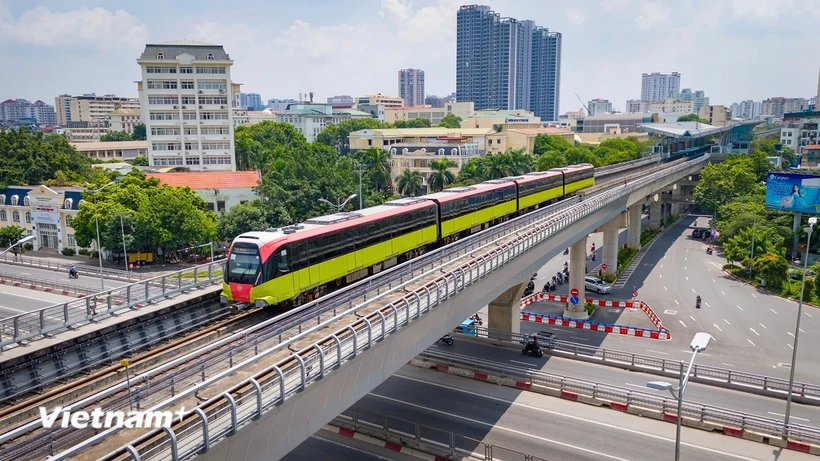 The Nhon-Cau Giay elevated urban railway section has been put into operation. (Photo: Hoai Nam/Vietnam+)
The Nhon-Cau Giay elevated urban railway section has been put into operation. (Photo: Hoai Nam/Vietnam+)
A series of specific, special and breakthrough mechanisms and policies to help remove bottlenecks in mechanisms, finance and investment procedures will create an important premise for Hanoi and Ho Chi Minh City to develop a modern, synchronous and sustainable public transport system, which is the driving force for smart urban development and promotes socio -economic growth.
More than 3 million billion VND to build urban railway
In the draft sent to the Government proposing to develop a National Assembly Resolution on piloting a number of specific mechanisms and policies to develop the urban railway network system in Hanoi and Ho Chi Minh City, Minister of Transport Tran Hong Minh said that currently, more than 200 cities in the world have built urban railway systems. In practice, major cities in the world prioritize the development of urban railways to meet the needs of passenger transport because this is a fundamental solution to solve the problems of congestion, environmental pollution and urban traffic accidents.
With a population of about 8.5 million people in Hanoi in 2023, 9.5 million people in Ho Chi Minh City and an average income per capita in 2023 in Hanoi of about 5,900 USD/person/year, in Ho Chi Minh City of about 6,700 USD/person/year, Minister Tran Hong Minh believes that accelerating investment progress, putting into operation, and exploiting the urban railway system synchronously and simultaneously at the present time is appropriate.
The two cities have identified the goal of developing an urban railway system to meet public transport needs, contributing to restructuring urban transport modes in a sustainable, harmonious and reasonable manner, in which, by 2035, they strive to basically complete the urban railway network according to Conclusion No. 49-KL/TW of the Politburo and approved plans.
Specifically, Hanoi and Ho Chi Minh City strive to put into operation 17 urban railway routes and sections with a total length of about 752 km by 2035, taking on 35-50% of the public passenger transport market share, and by 2045 put into operation 7 more routes and 4 sections with a total length of about 355 km, taking on 50-60% of the public passenger transport market share.
The Ministry of Transport also proposed a budget for investment and implementation of the projects with an estimated total investment capital requirement for the urban railway system of the two cities of about VND 3,065,100 billion. Of which, the central budget will provide targeted support for the two cities of about VND 424,850 billion, the Hanoi city budget will balance and allocate about VND 1,170,250 billion (equivalent to about USD 8.61 billion), and the Ho Chi Minh City budget will balance and allocate about VND 1,470,000 billion (equivalent to about USD 8.38 billion).
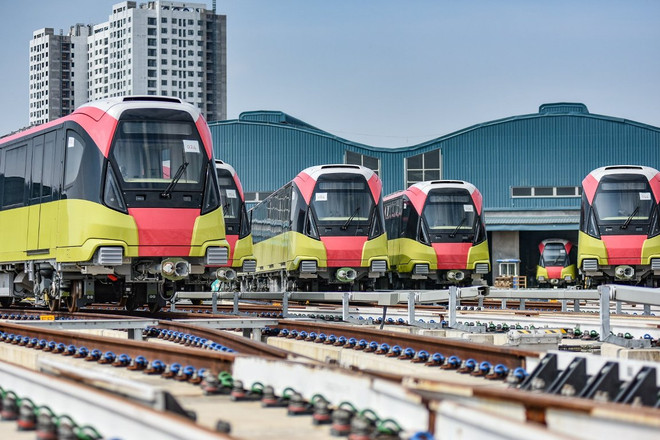 Hanoi and Ho Chi Minh City strive to put 17 urban railway routes and sections into operation by 2035. (Photo: PV/Vietnam+)
Hanoi and Ho Chi Minh City strive to put 17 urban railway routes and sections into operation by 2035. (Photo: PV/Vietnam+)
With the orientation of the socio-economic development plan in the coming time, in which the national growth rate is expected to reach double digits in the period of 2026-2030, the Ministry of Transport believes that the allocation of capital from the central budget for targeted support, estimated at about 424,850 billion VND in 10 years, is feasible to balance without having a major impact on the central budget.
What are the 6 groups of specific mechanisms and policies?
The draft Resolution on piloting a number of specific mechanisms and policies to develop the urban railway system in Hanoi and Ho Chi Minh City also proposes 6 groups of specific mechanisms and policies, especially on capital mobilization; procedures for investment implementation; development of urban development planning models according to the public transport model (TOD); development of railway industry, technology transfer and training; sources of construction materials and waste disposal sites; policies specifically applicable to Ho Chi Minh City.
The draft resolution also provides many flexible mechanisms to help the two cities proactively mobilize capital from additional revenue sources, cost savings, and ODA capital without having to prepare project proposals. In particular, the approval process is simplified, allowing immediate implementation of investment preparation, appraisal, and decision without having to go through the investment policy decision step and related procedures.
In addition, the front-end engineering design (FEED) will replace the basic design in the feasibility study report, helping to shorten the implementation time. Local authorities also have the right to proactively divide the project, extend the implementation time, apply direct contracting in some cases and use cost norms according to international standards; compensation and resettlement work can be separated into independent projects.
An important highlight is the integration of urban development planning according to the public transport model (TOD). This mechanism helps the city flexibly adjust planning and transfer land use targets without having to go through procedures to adjust land use plans. As a result, areas around urban railway stations will be systematically planned, increasing population density and commercial functions, both promoting economic development and reducing dependence on personal vehicles.
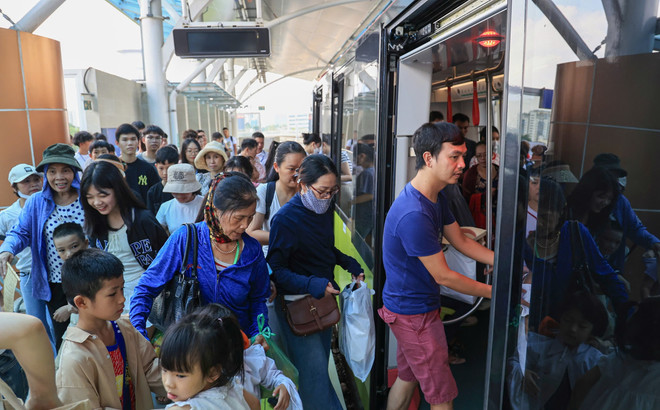 People using urban railways help reduce traffic congestion and environmental pollution. (Photo: Hoai Nam/Vietnam+)
People using urban railways help reduce traffic congestion and environmental pollution. (Photo: Hoai Nam/Vietnam+)
The draft resolution also aims to develop the domestic railway industry, ensure uniform technical standards and implement preferential policies on technology transfer and human resource training. Domestic enterprises will have the opportunity to participate more deeply in the supply chain for urban railway projects.
It is expected that the Government will submit to the National Assembly for approval a Resolution of the National Assembly on piloting a number of specific policies, especially investment in the construction of an urban railway network system in Hanoi and Ho Chi Minh City at the 9th extraordinary session of the 15th National Assembly in February 2025./.
(Vietnam+)


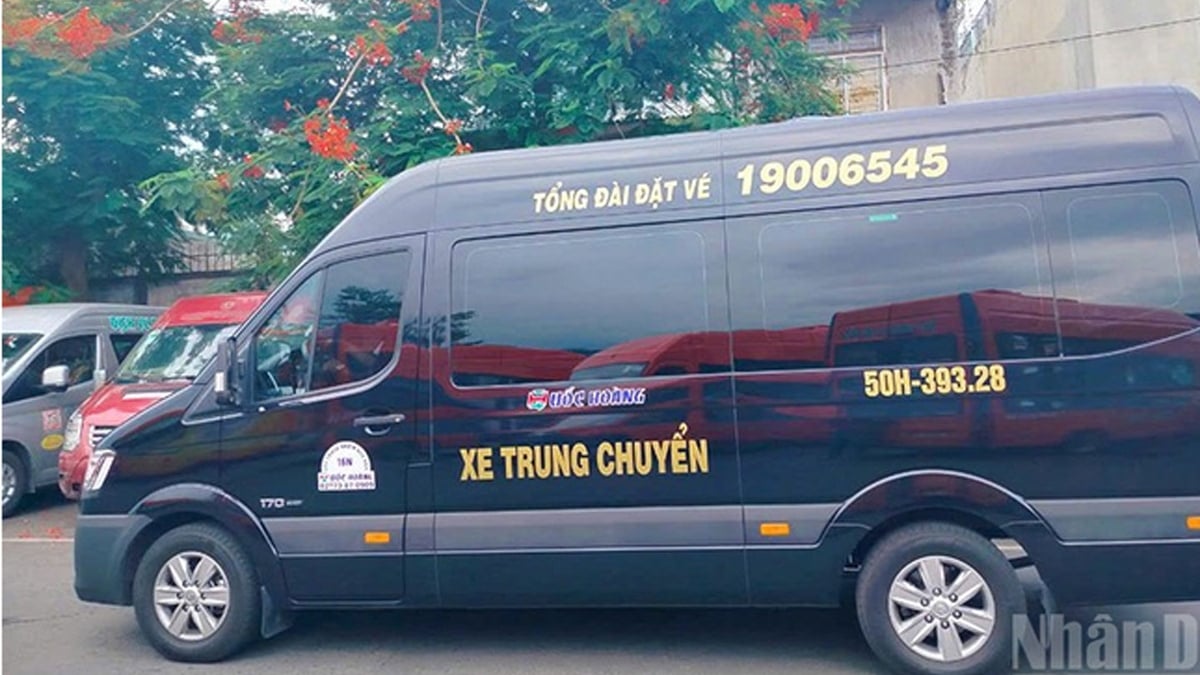

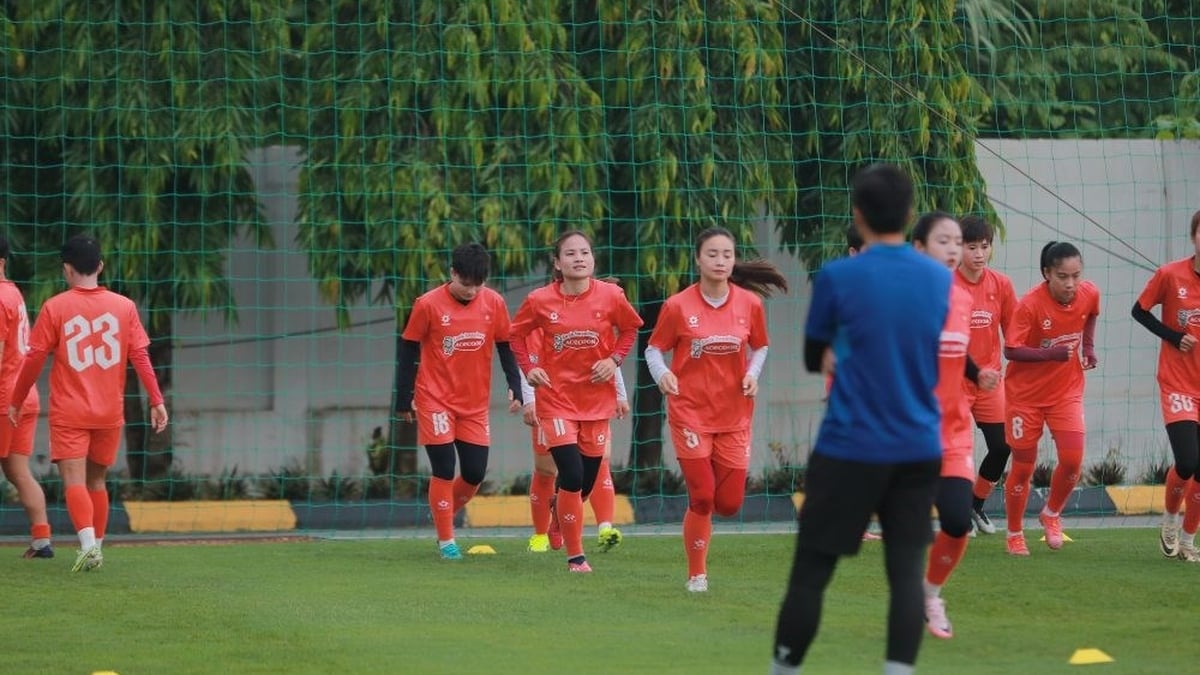
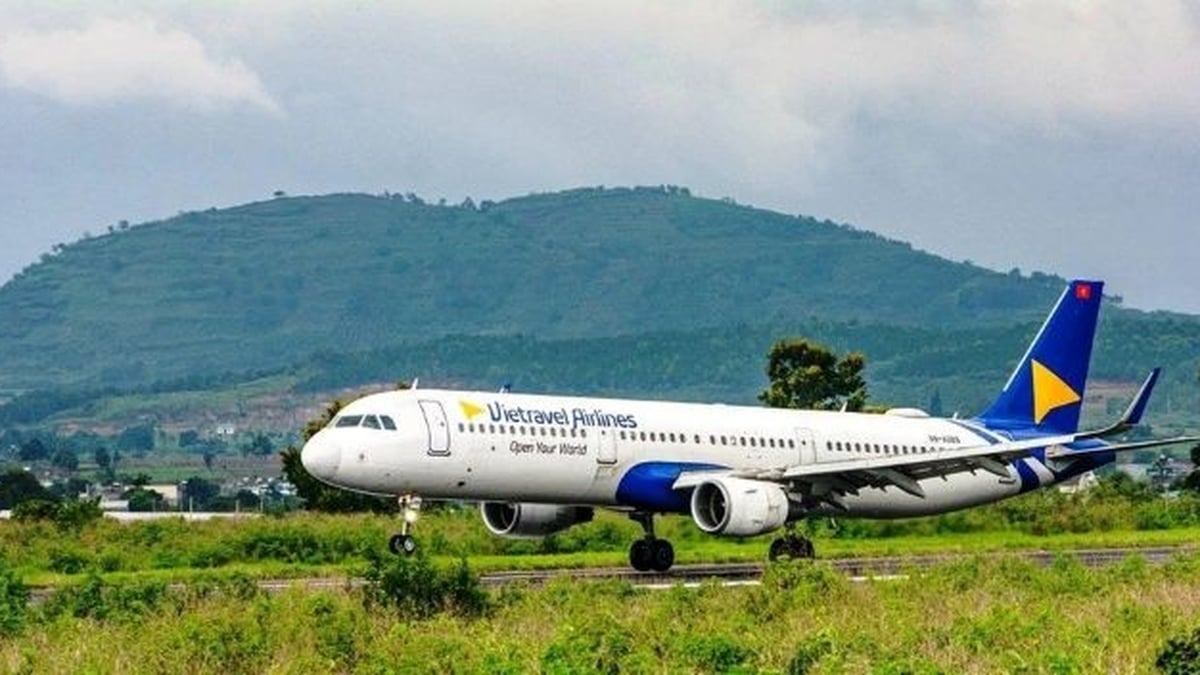



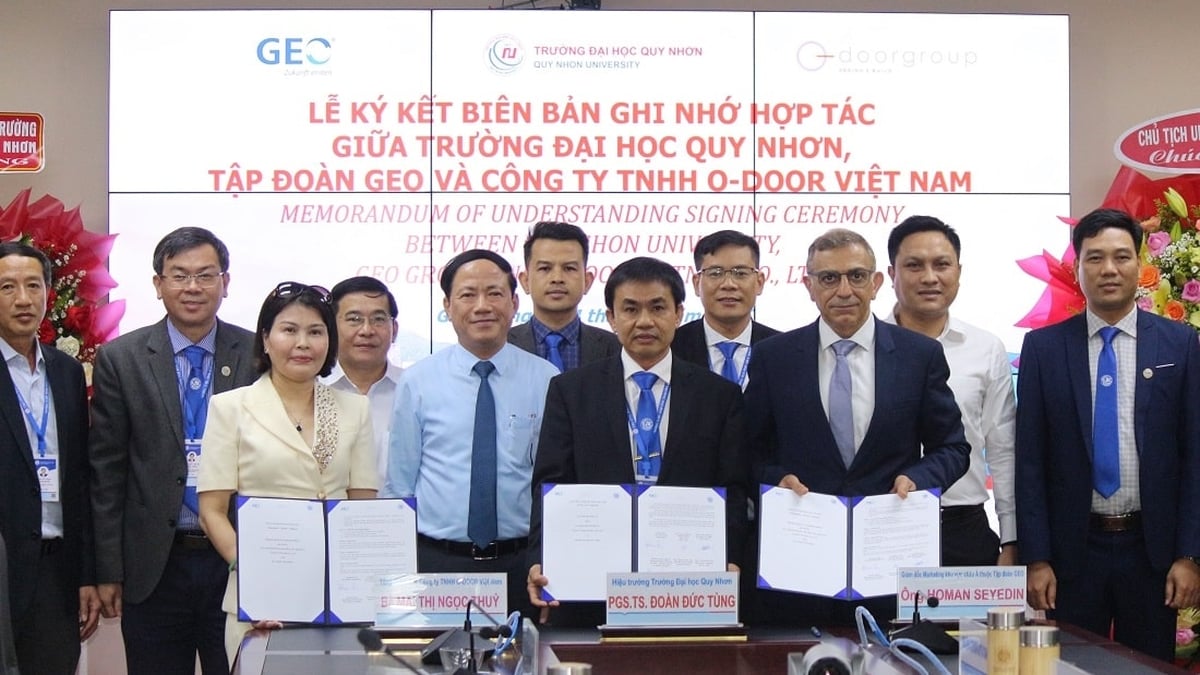
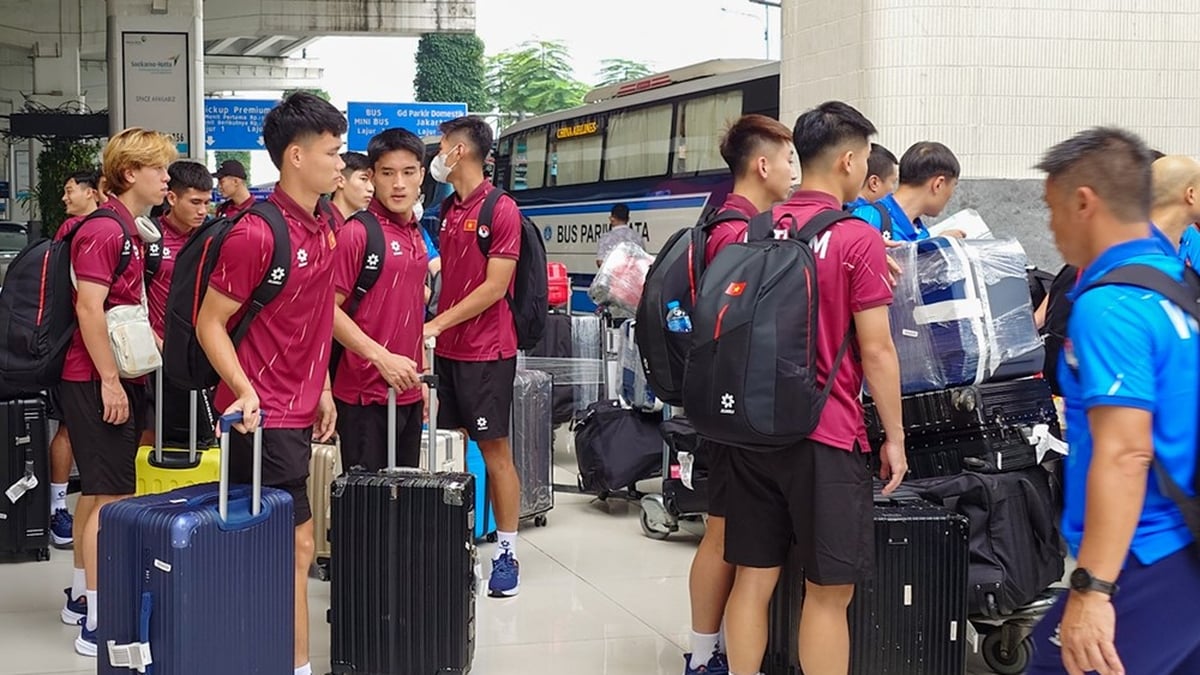































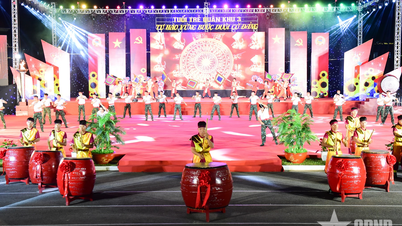







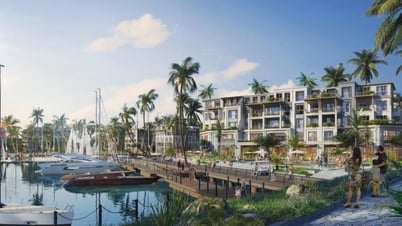
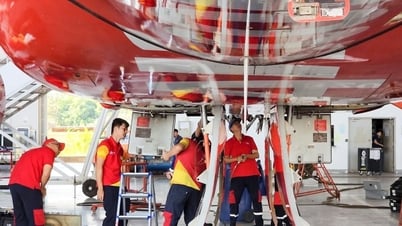

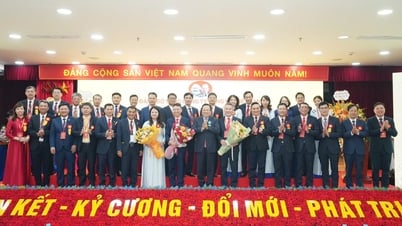









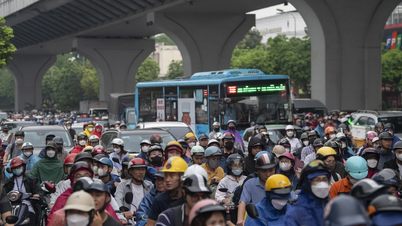
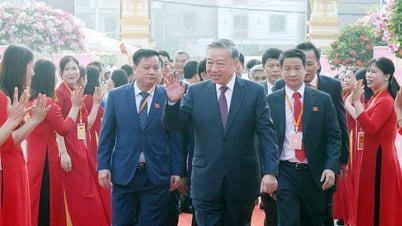
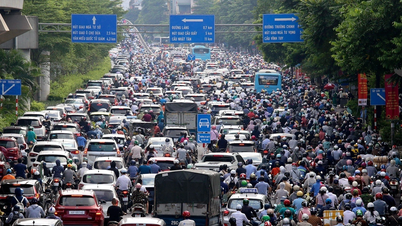
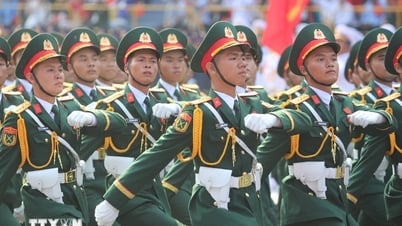
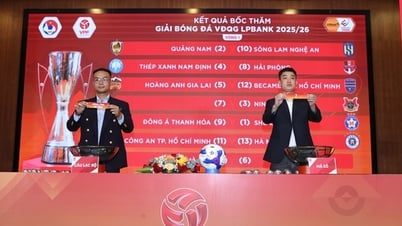



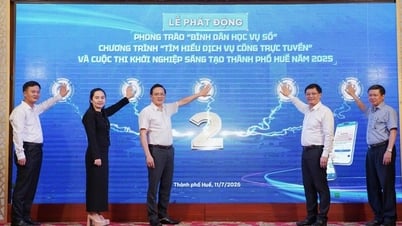




























Comment (0)